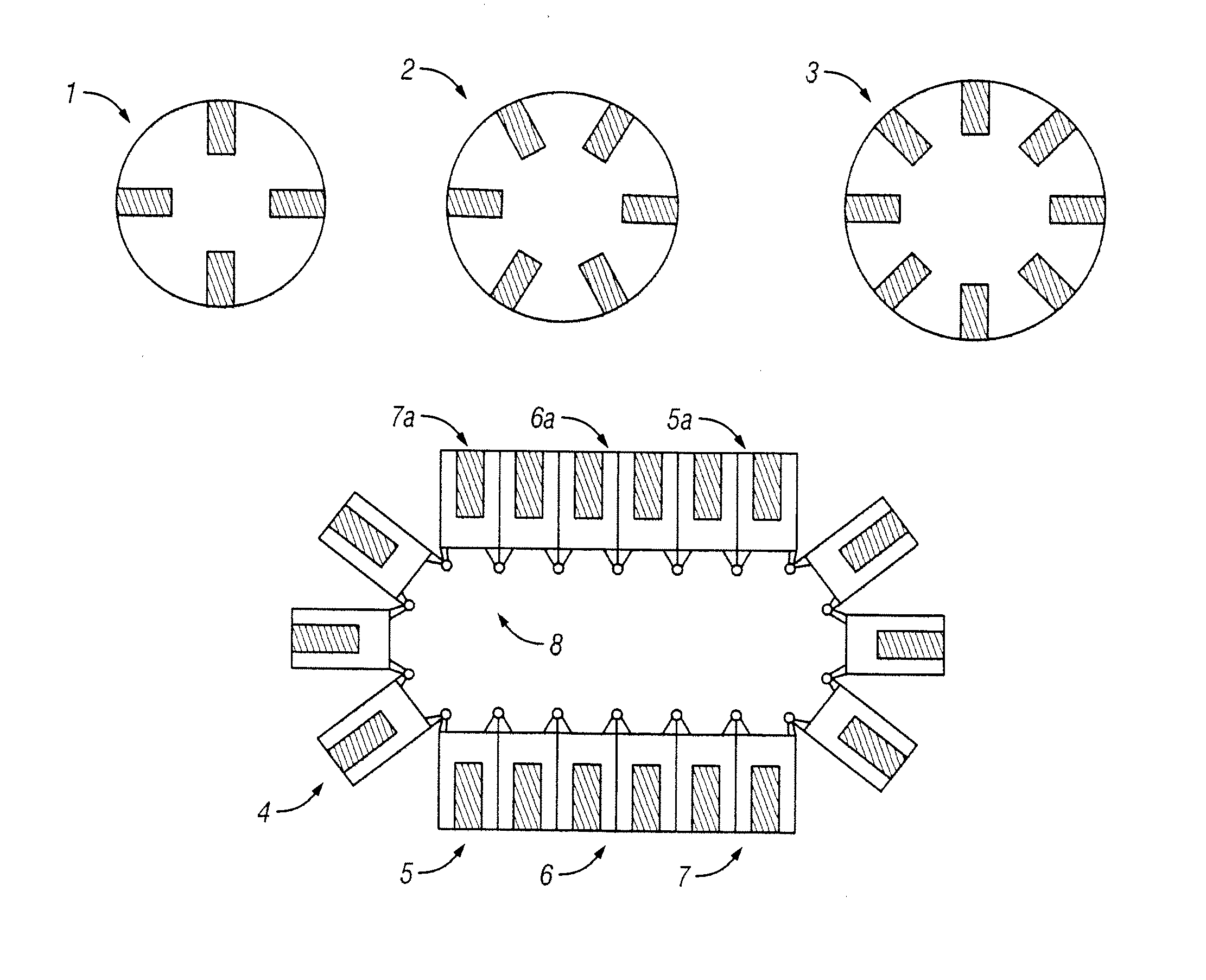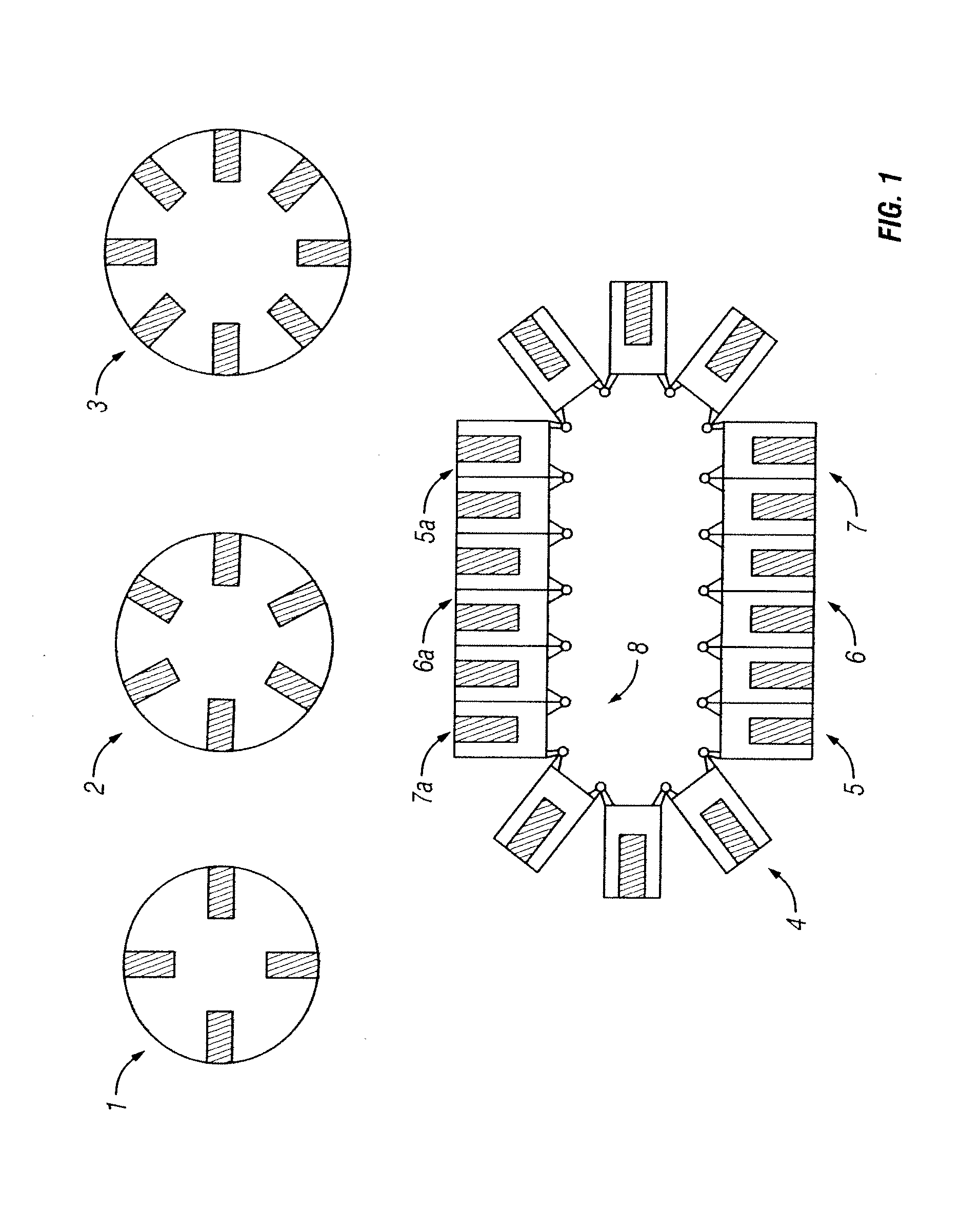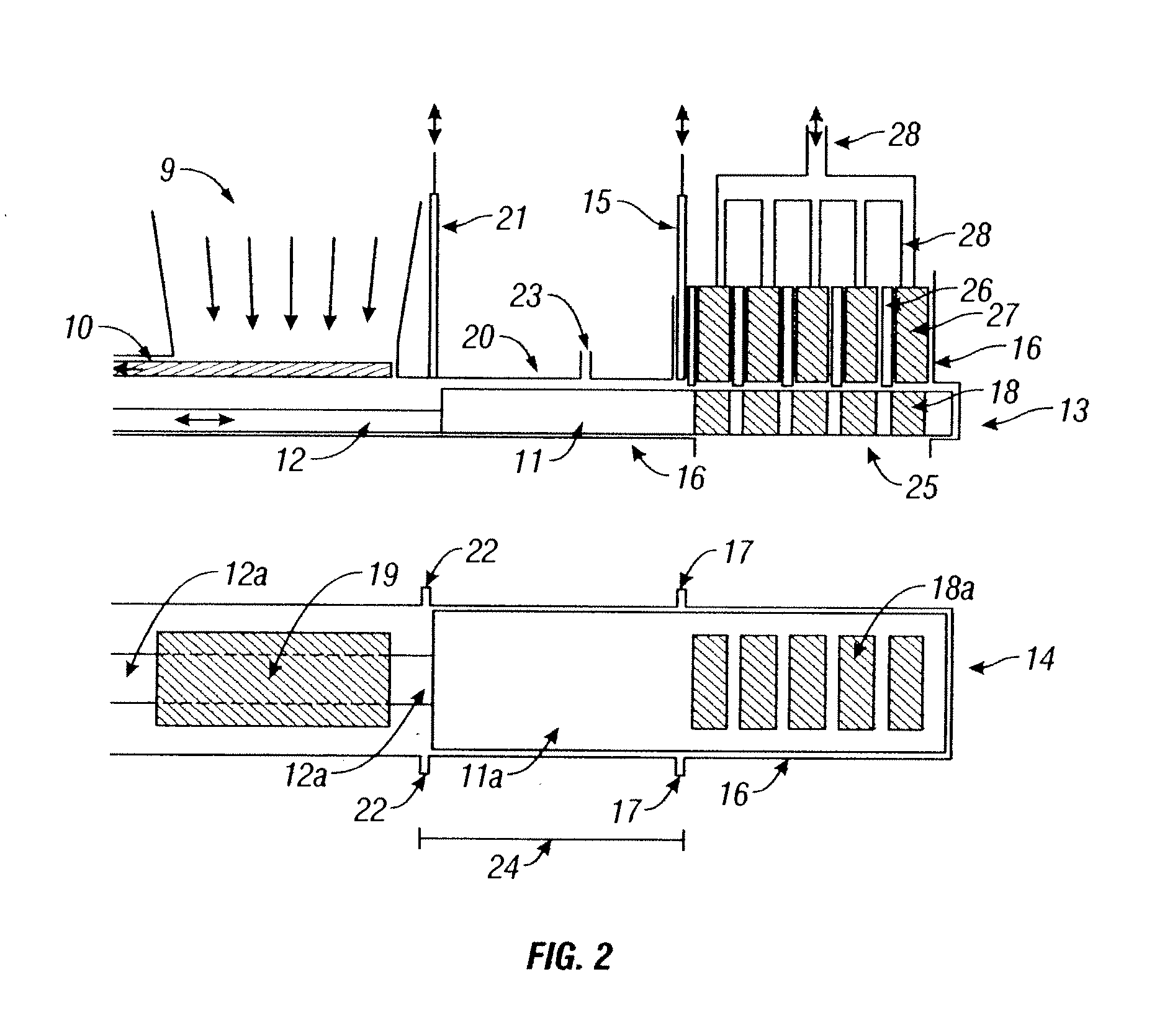System and method for biomass fractioning
a biomass and system technology, applied in the field of clean energy, can solve the problems of affecting affecting the efficiency of biomass fractionators, so as to facilitate the input of biomass and improve the yield of biomass fractionators
- Summary
- Abstract
- Description
- Claims
- Application Information
AI Technical Summary
Benefits of technology
Problems solved by technology
Method used
Image
Examples
Embodiment Construction
[0020]The following diagrams and description present examples of the invention, but in no way, limit the application of the above concepts. The following designs are simply illustrative of their application.
[0021]FIG. 1 is a diagram of example biomass reaction compartments in accordance with some embodiments of the invention. As illustrated in FIG. 1, biomass reaction compartments can be machined or cast into solid discs (1, 2, 3). These discs may rotate via any of a number of common drive mechanisms such as gear drives, chain drives, ratcheting sprockets, etc. The disc can rotate continuously. However, to simplify operation of individual processing stations, it may be desirable to step the disc, typically with the same number of indexes per rotation as there are biomass chambers. Although embodiments of the invention can have one or more chambers in a disc, preferably there are 4 to N chambers in a disc.
[0022]Still referring to FIG. 1, the biomass chamber is much wider and longer t...
PUM
 Login to View More
Login to View More Abstract
Description
Claims
Application Information
 Login to View More
Login to View More - R&D
- Intellectual Property
- Life Sciences
- Materials
- Tech Scout
- Unparalleled Data Quality
- Higher Quality Content
- 60% Fewer Hallucinations
Browse by: Latest US Patents, China's latest patents, Technical Efficacy Thesaurus, Application Domain, Technology Topic, Popular Technical Reports.
© 2025 PatSnap. All rights reserved.Legal|Privacy policy|Modern Slavery Act Transparency Statement|Sitemap|About US| Contact US: help@patsnap.com



